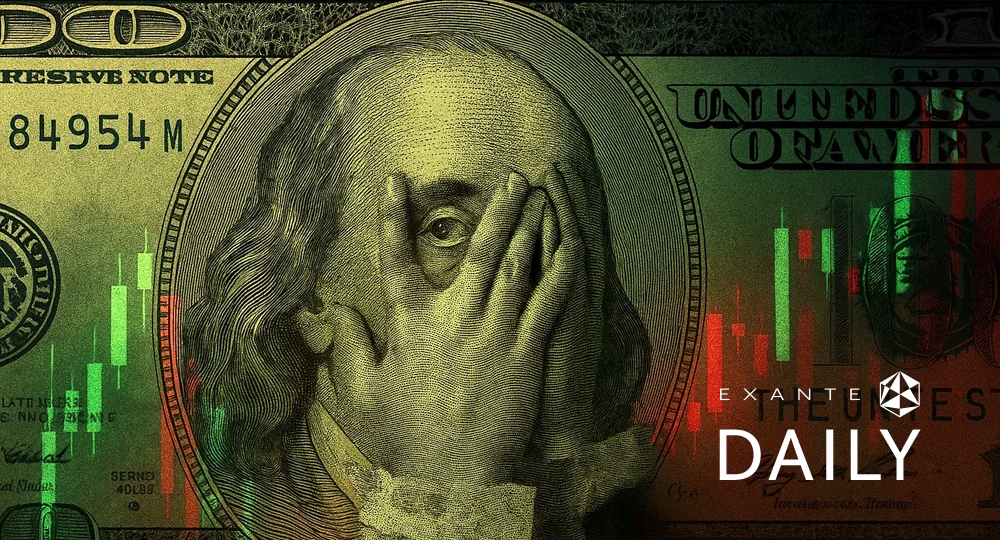
Equity Monthly Review August 2024

 |
Horacio Coutino, Equities investment writer |
Q2 Earnings in focus
As yet another corporate earnings season comes to an end, S&P 500 companies demonstrate mixed performance relative to expectations. The proportion of companies reporting positive earnings surprises exceed their 10-year averages. However, the magnitude of these surprises above expectations (surprise factor) is below their 10-year average. The S&P 500 is currently exhibiting its highest earnings y/o/y growth rate since Q4 2021.
According to LSEG I/B/E/S, as of 23rd August, 95.4% of S&P 500 companies have reported their actual Q2 2024 results, with 79.5% surpassing EPS estimates. This figure exceeds both the 5-year average of 77% and the 10-year average of 74%.
The blended earnings growth rate for the first quarter currently stands at 12.7%, an increase of 3.8 percentage points from the 8.9% growth rate reported at the end of the quarter (30th June). If this 12.7% figure holds, it will represent the index's highest y/o/y earnings growth since Q4 2021, when it was 31.4% and is 6.8 percentage points higher than last quarter at 5.9%. It will also mark the fourth consecutive quarter of y/o/y earnings growth.
Since 30th June, companies have been reporting earnings 4.6% above expectations. This surprise factor is below the 1-year average (+6.4%), 5-year average (+8.5%), and 10-year average (+6.7%). The Utilities sector (+8.8%) leads in positive aggregate difference between actual and estimated earnings, followed by Financials (+6.5%) and Industrials (+4.7%).
Regarding revenue, 60.0% of S&P 500 companies have surpassed earnings estimates, below the 5-year average of 69% and the 10-year average of 64%. Aggregate revenues are 1.1% above estimates, a figure significantly lower than the 5-year average of 2.0% and the 10-year average of 1.4%.
Positive revenue surprises from companies within the Energy and Financials sectors have been the primary drivers of the index's increased revenue growth rate since 30th June, contributing +3.2% and +2.4%, respectively. Conversely, the Utilities sector experienced the largest negative difference between actual and estimated revenues, at -2.9%. Collectively, the blended revenue growth rate for the second quarter is currently 5.4%. This figure represents an increase from the 4.7% rate expected at the end of the quarter.
The forward 12-month price-to-earnings (P/E) ratio is 21.5x, surpassing both the 5-year average of 19.3x and 10-year average of 17.8x, and this figure is higher than the 21.0x recorded at the end of the second quarter (30th June).
16 S&P 500 companies are scheduled to report their second-quarter results the week of 26th August.
S&P 500 Earnings Growth: +12.7%
Nine of the eleven sectors have reported or are projected to report y/o/y earnings growth for Q2 2024. The Financials, Health Care, Information Technology, and Utilities sectors lead this growth. Conversely, Materials and Energy sectors have recorded a y/o/y decline in earnings.
The Financials sector stands out with the highest y/o/y earnings growth rate among all sectors, at +20.6%. JPMorgan Chase with earnings per share (EPS) of $6.12 (versus $5.88), Berkshire Hathaway ($5.38 vs. $4.36), Discover Financial Services ($6.06 vs. $3.10) and American Express ($4.14 vs. $3.26) have significantly contributed to this growth. As a result, the blended earnings growth rate for the Financials sector has increased to 20.6% from 4.3%.
Health Care closely follows with the second-highest growth rate at +20.4%. At the industry level, three of the five industries in the sector are reporting (or have reported) y/o/y earnings growth. Two of these three industries are reporting a double-digit increase: Pharmaceuticals (+95%) and Health Care Equipment & Supplies (+10%). On the other hand, two industries are reporting (or have reported) a y/o/y decline in earnings, led by the Biotechnology (-37%) industry. At the company level, Merck ($2.28 vs. -$2.06) is the largest contributor to earnings growth for the sector. If this company were excluded, the Health Care sector would be reporting a y/o/y earnings growth of 1.6% instead of y/o/y earnings growth of 20.4%. On the other hand, Vertex Pharmaceuticals (-$12.83 vs. $3.89) is the largest detractor to earnings growth for the sector. If this company were excluded, the blended earnings growth rate for the Health Care sector would improve to 28.2% from 20.4%.
Information Technology reports the third-highest y/o/y earnings growth rate at +19.8%. Within this sector, four of the six industries are reporting y/o/y earnings growth. Two of these industries are reporting double-digit increases: Semiconductors & Semiconductor Equipment (+52%), and Technology Hardware, Storage, & Peripherals (+15%). At the company level, the positive EPS surprise reported by Apple ($1.40 vs. $1.34) has been a substantial contributor to the increase in the earnings growth rate for the index since June 30. Unsurprisingly, Nvidia ($0.64 expected vs. $0.27) is expected to be the largest contributor to earnings growth for the sector. If this company were excluded, the blended y/o/y earnings growth rate for the Information Technology sector would fall to 10.4% from 19.8%.
Materials experienced the most substantial y/o/y earnings decline of all sectors, at -5.9%. In terms of sub-industry performance, 5 of the 10 sub-industries in the sector are anticipated to see lower earnings than a year ago. The steel (-50.3%) and specialty chemicals (-12.1%) sub-industries have the lowest earnings growth in the sector. If these sub-industries are removed, the growth rate improves to 8.3%.
It is noteworthy that the Energy sector has also undergone the most substantial decline in earnings across all sectors since the end of the second quarter. On 30th June, the estimated earnings growth for the sector in Q2 stood at +13.3%. However, current reports reveal a y/o/y blended earnings increase of just +1.3%. This significant downward revision in earnings is primarily attributed to the downward revisions to EPS estimates (to $2.93 from $3.27) and the negative EPS surprise ($2.55 vs. $2.93) reported by Chevron and the downward revisions to EPS estimates (to $2.02 from $2.37) for Exxon Mobil (which were partially offset by the company’s positive EPS surprise) have been significant detractors to the increase in the overall earnings growth rate for the index since 30th June.
S&P 500 Net Profit margin: 12.2%
As of 16th August, according to Factset, the blended net profit margin for the S&P 500 in Q2 2024 reached 12.2%, surpassing the previous quarter's net profit margin of 11.8%, the 5-year average of 11.5%, and the year-ago net profit margin of 11.6%.
Sector-specific analysis reveals that five sectors experienced a y/o/y increase in their net profit margins in Q2 2024 compared to Q2 2023. Leading this growth were the Financials with 1.9 percentage points (18.7% vs. 16.6%), Information Technology with 1.8 percentage points (25.1% vs. 23.3%), and Utilities at 1.9 percentage points (13.7% vs. 11.8%). Conversely, five sectors reported y/o/y declines in their net profit margins led by Real Estate with 0.9 percentage points (35.8% vs. 36.7%). Consumer Staples is reporting no change in net profit margin (6.4% vs. 6.4%).
Furthermore, eight sectors reported Q2 2024 net profit margins exceeding their 5-year averages, with the Industrials (10.9% vs. 8.2%) and Consumer Discretionary (9.2% vs. 6.6%) and Financials (18.7% vs. 16.4%) demonstrating the most significant increases. In contrast, three sectors reported Q2 2024 net profit margins below their 5-year averages, most notably the Health Care (8.3% vs. 9.8%).
The S&P 500 reaction to earnings
The market response to earnings surprises reported by S&P 500 companies has been asymmetrical. Positive surprises are being rewarded at average, while negative surprises are being punished more than average.
Companies exceeding earnings expectations have seen an average price increase of +1.0% in the two-day window preceding and following the earnings release. This is equal to the 5-year average price increase of +1.0% observed during this timeframe for companies with positive surprises.
Conversely, companies undershooting earnings expectations have experienced an amplified negative response. On average, their shares prices were -3.8% in the two-day window surrounding the earnings release. This is larger than the 5-year average of -2.3% witnessed for companies with negative surprises.
The S&P 500 is +0.92% since this earnings season began on 8th July.
Global backdrop
August witnessed significant swings across major global equity indices. This volatility was primarily triggered by concerns labelled as a "growth scare" in the financial media. These arose following July's nonfarm payrolls and unemployment report, which suggested a significant softening labour market in Q2, raising concerns about the Fed's future policy stance. This caused a sharp downturn across risk assets, impacting major equity indices. The subdued trading volumes characteristic of the summer months further amplified the market movements. Consequently, major European and US indices experienced weak performance in August, though they managed to recover towards the end of the month. Market expectations of a September rate cut solidified following Federal Reserve Chair Jerome Powell's speech at the Fed's Jackson Hole economic symposium in Wyoming on 23rd August.
- According to the CME FedWatch tool, interest rate swaps have priced in a 63.5% probability that the Fed rate will be set lower, in the target range of 5 - 5.25% at its 18th September meeting, additionally, interest rate swaps have priced in a 38% probability of a 50 bps rate cut on that date. This contrasts with 31st July pricing which assigned a 87.7% probability to a 25 bps rate cut on that date.
- Yields have decreased across regions in August, following a significant decline in July. The US 10-year yield was -19.9 basis points (bps) to 3.836% as of 28th August, while the 10-year German Bund was -4.7 bps to 2.258%. The spread between the two narrowed by 15.2 bps from 173.0 bps at the end of July to 157.8 bps.
- The US dollar weakened in August. The US Dollar Index, at 100.53, was -2.93%, while the YTD performance by 28th August turned negative at -0.38%. The euro was +2.74% against the dollar, while Sterling was +2.61% in August.
Regional breakdown
US
S&P 500 +1.27% MTD +17.24% YTD
Nasdaq 100 +1.13% MTD +16.38% YTD
Dow Jones +1.00% MTD +9.45% YTD
Russell 2000 -2.92% MTD +7.97% YTD
Note: As of 5pm EDT 28 August 2024.
Source: Factset
With the exception of the Energy and Consumer Discretionary sectors, all other S&P 500 sectors experienced positive performance in August. Consumer Staples has led the index's performance this month, +5.50% , followed by Real Estate at +5.04% and Health Care +4.02%.
In contrast with July, the equal-weighted version of the S&P 500 underperformed the benchmark by 0.12 percentage points MTD, yielding a +1.15% return compared to the S&P 500's +1.27%. The equal-weighted version has achieved a +9.89% YTD return, compared to the S&P 500's +17.24%.
Source: Factset
An analysis of the past five years (60 months) reveals that August performance for major US stock indices has been subdued, falling below their median monthly returns. The S&P 500 and Dow Jones Industrial Average both rank at the 40.6th percentile for August performance, suggesting that 36 of the past 60 months have seen stronger returns. The Nasdaq 100’s August performance ranks at the 35.5th percentile, implying that 39 of the past 60 months revealed a superior performance. The Russell 2000's August performance is particularly lacklustre, ranking at its 30.5th percentile, the lowest among the US indices analysed. This indicates that only 18 months out of the past 60 have experienced a more negative return than its current -2.28% .
Europe
Stoxx Europe 600 +0.14% MTD +8.33% YTD
Germany DAX +0.94% MTD +11.52% YTD
FTSE 100 -0.27% MTD +7.92% YTD
France CAC 40 +0.46% MTD +0.30% YTD
Spain IBEX 35 +2.37% MTD +12.12% YTD
MSCI Europe -0.06% MTD +7.98% YTD
Source: Factset
In August, the Stoxx Europe 600 displayed a nuanced performance across its sectors, with nine of its seventeen sectors in positive territory. The Retail sector emerged as the frontrunner, +4.30%, followed by Insurance +4.14% and Telecom at +3.78%.
Conversely, Basic Resources was -4.61%, while Oil & Gas declined -3.46%.
A comparative analysis of the Stoxx Europe 600 Equal Weight (EW) index reveals a contrasting picture. The EW index, which assigns equal weight to each constituent company, posted a +0.05% return in August, underperforming the Stoxx Europe 600's +0.47%. Moreover, its YTD performance stands at +5.85%, 2.84 percentage points lower than the European benchmark. This suggests a less evenly distributed increase across companies within the main index, potentially influenced by the performance of large-cap companies.
Source: Factset
An analysis of European equity index performance over the past five years (60 months) reveals a similar performance to their American counterparts in August, with the exception of Spain’s IBEX 35.
The Stoxx Europe 600 and MSCI Europe indices both rank at the 40.6th percentile for their August performance, mirroring their US counterparts. This indicates that 36 months within the past five years have yielded higher returns for these indices. Notably, the Stoxx Europe 600's performance during this period surpasses that of the MSCI Europe by 0.32 percentage points.
Among European indices, Spain's IBEX 35 has demonstrated the strongest performance in August, with a gain of 2.37%, placing it at the 69.4th percentile.
Germany's DAX follows at the 47.4th percentile, having risen 1.48% so far this month. This implies that 32 of the past 60 months have seen stronger performance than August 2024 for the DAX.
France’s CAC 40 has also exhibited a mild performance, positioned at the 44.0th percentile, suggesting that 34 out of the past 60 months have witnessed stronger performance for the French index.
The UK’s FTSE 100 at -0.29% has the lowest August performance among the European indices analysed, placing it at the 33.8th percentile. This signifies that 40 of the past 60 months have seen superior performance for the FTSE 100.
As of 27th August, according to LSEG I/B/E/S data for the STOXX 600, Q2 2024 earnings are expected to increase 3.1% from Q2 2023. Excluding the Energy sector, earnings are expected to increase 2.2%. Q2 2024 revenue is expected to decrease 0.7% from Q1 2023. Excluding the Energy sector, revenues are expected to decrease 1.2%. Of the 248 companies in the STOXX 600 that have reported earnings by 27th August for Q2 2024, 52.8% reported results exceeding analyst estimates. In a typical quarter 54% beat analyst EPS estimates. Of the 342 companies in the STOXX 600 that have reported revenue by 27th August for Q2 2024, 58.5% reported revenue exceeding analyst estimates. In a typical quarter 58% beat analyst revenue estimates.
Financials, at 75%, is the sector with most companies reporting above estimates. At the same time, the sector that beat earnings expectations by the highest surprise factor, at 9%. In the Real Estate sector only 20% of companies reported above estimates. Basic Materials’ earnings surprise factor was the lowest at -9%.The STOXX 600 surprise factor is 4.4%. The forward four-quarter price-to-earnings ratio (P/E) for the STOXX 600 sits at 13.3x.
During this week, 3 companies are scheduled to report quarterly earnings.
Analysts expect positive Q2 earnings growth from nine of the sixteen countries represented in the STOXX 600 index. Portugal (38.6%) and Spain (29.1%) have the highest estimated earnings growth rates, while Ireland (-45.7%) and Poland (-12.8%) have the lowest estimated growth.
Why did the VIX get it wrong?
At first glance, 5th August's extreme volatility appeared to be a historic stock market shock, a rare surge in turbulence that echoed across global markets. However, market performance thereafter invites a different theory: Was the event perhaps not as dire as it seemed? In short, why did the CBOE Volatility Index (VIX) experience its largest intraday jump ever recorded?
The VIX, often referred to as the "fear gauge," measures expected volatility in US stocks. However, it is not clear whether its dramatic spike on Monday, 5th August, accurately reflected market sentiment or was instead influenced by technical factors.
The VIX's unprecedented surge to above 65, a level typically associated with extreme panic, has since been attributed to a number of potential causes, eg, low liquidity, short covering in volatility trades, or even the way the VIX is calculated. The VIX is a mathematical quantity derived from S&P 500 Index options prices, not a directly traded instrument.
Derivatives traders often favour VIX futures, which represent actual money flows, as a more reliable indicator of market sentiment. On that Monday, VIX futures exhibited significantly smaller increases compared to the VIX itself.
This underscores the importance of actual trades over market quotes. During major market moves outside regular trading hours, the front-month VIX future may offer a more accurate reflection of hedging demand than the VIX itself.
On 5th August, a wave of anxiety swept through the markets following a series of negative macroeconomic developments, including concerns over the US economy's health and the sustainability of the AI-driven tech rally. Rising interest rates in Japan triggered an unwinding of the yen-based carry trade, further fueling market turmoil. Consequently, the VIX surged. However, the question remains whether these factors warranted the largest-ever intraday jump in the VIX, a volatility gauge that has weathered events such as the great financial crisis and Volmageddon.
The VIX is a crucial input in many Wall Street predictive models. A sudden spike, such as the one observed on 5th August, typically signifies investor capitulation and potentially signals an impending market rebound. Indeed, both the S&P 500 and Japan's Topix recovered within a week.
The VIX's 42-point climb in under five hours on 5th August pushed it to 65.73 at 8:37 am in New York. However, August futures tied to the index only increased by approximately 5 points during the same period. At its peak, the gap between the index level and its front-month contract was a staggering 32 points.
While this large spread shrank to 8 points by the end of the session, the swift comeback suggests that the initial VIX jump might have exaggerated the actual level of investor fear.
One contributing technical factor could be the VIX's calculation methodology, which relies on a chain of S&P 500 options selected by an algorithm using the mid-point of bid and ask prices. In periods of thin liquidity and heightened market turbulence, bid-ask spreads can widen dramatically, potentially inflating the VIX beyond what is warranted.
Moreover, pre-market trading volumes tend to be low, making markets susceptible to significant swings from even small orders. This further contributes to the potential for distortions in the VIX during early trading hours.
In addition, a volatility strategy known as the ‘dispersion trade’ may have exacerbated the VIX's ascent. This strategy involves investors betting on smaller swings in an index while wagering on higher volatility in its constituent stocks. They typically sell options on a broad equity gauge like the Nasdaq 100 and simultaneously buy similar derivatives on individual components like Nvidia Corp. or Tesla Inc. The strategy capitalises on the higher demand for index hedges from investors seeking portfolio insurance, as they tend to pay a premium for protection at the benchmark level compared to the cost at the individual stock level. This dynamic has played out over the last three years amid rising benchmark rates, with the average volatility of S&P 500 members now at its highest level relative to the index since at least 2011, according to data compiled by Societe Generale.
On 5th August, the VIX's pre-market surge coincided with a rise in the cost of S&P 500 put options exceeding that of Apple and Microsoft, a deviation from the typical pattern where options on these components are more expensive. This suggests stress on the stock-index volatility differential, implying that dispersion traders might have contributed to the volatility spike.
Prior to the market opening, dispersion traders may have incurred mark-to-market losses on their short index positions while the single stock market remained closed. If this prompted them to cover their short index volatility positions and subsequently sell single stock option positions after the market opened, it could have contributed to a spike in index volatility pre-open, followed by a reduction in all volatility levels (particularly single stock) once the market was fully operational.
Thoughts on Nvidia’s Q2 earnings
Consider a company with an impressive track record: six consecutive quarters of exceeding expectations on revenue, earnings per share, and raising guidance (known as a triple play). This feat is even more remarkable given the company's market capitalization exceeding $3 trillion, where maintaining such high growth rates can be challenging. However, Nvidia's Q2 triple play, despite surpassing estimates, failed to infuse the enthusiasm of previous quarters’ beats.
Although the 3Q revenue guidance of $32.5 billion represents an 8% q/o/q and 79% y/o/y increase at the midpoint, surpassing consensus estimates by 2%, and the guided gross margin of 75% implies an FY3Q EPS of approximately $0.73, also 2% above consensus, the market's subdued reaction seems to stem from management's full-year gross margin guidance of mid-70%, suggesting a further sequential decline in 4Q. Concerns over potential gross margin erosion might temporarily affect the stock price, but the company's fundamentals and the long-term growth narrative surrounding AI remain strong.
The market's reaction post-earnings appears to reflect the exceptionally high expectations placed on Nvidia, perhaps overshadowing its substantial achievements. While concerns persist about the sustainability of growth in AI infrastructure capital expenditures, potential supply constraints leading to production backlogs, and gross margin normalisation, Nvidia's underlying strength was evident in its Q2 results. The robust demand environment for data centres was particularly striking, with this segment's Q2 y/o/y growth of 154% contributing $26.27 billion to the total revenue of $30.04 billion.
An unexpected highlight of the earnings call was the strength of Nvidia's capital return. Backed by robust free cash flow generation ($13.5 billion in Q2, $47 billion on a trailing twelve-month basis), the company returned $7.4 billion to shareholders in Q2, comprising $7.2 billion in share repurchases and $246 million in dividends. Furthermore, Nvidia announced an additional $50 billion share repurchase authorization.
Could Nvidia be a victim of its own success? As its growth rate moderates due to comparisons with last year's exceptional performance, consistently exceeding elevated expectations each quarter becomes increasingly difficult. Investors, therefore, should ask themselves if there can be too much of a good thing?
While every effort has been made to verify the accuracy of this information, EXT Ltd. (hereafter known as “EXANTE”) cannot accept any responsibility or liability for reliance by any person on this publication or any of the information, opinions, or conclusions contained in this publication. The findings and views expressed in this publication do not necessarily reflect the views of EXANTE. Any action taken upon the information contained in this publication is strictly at your own risk. EXANTE will not be liable for any loss or damage in connection with this publication.
This article is provided to you for informational purposes only and should not be regarded as an offer or solicitation of an offer to buy or sell any investments or related services that may be referenced here. Trading financial instruments involves significant risk of loss and may not be suitable for all investors. Past performance is not a reliable indicator of future performance.




